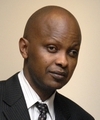John M. Mugane, Director of African Languages Program
 Established in 2003, the African Language Program in the Department of African and African American Studies offers instruction in more than fifteen languages every semester. African languages can be taken to fulfill the foreign language requirement for Harvard College. These languages are a core part of the African Studies Track in the Department of African and African American Studies (AAAS) and relate well to a variety of courses within Harvard College, and other constituents of Harvard University. All language offerings are contingent upon enrollment of at least three Harvard undergraduate students or one graduate student.
Established in 2003, the African Language Program in the Department of African and African American Studies offers instruction in more than fifteen languages every semester. African languages can be taken to fulfill the foreign language requirement for Harvard College. These languages are a core part of the African Studies Track in the Department of African and African American Studies (AAAS) and relate well to a variety of courses within Harvard College, and other constituents of Harvard University. All language offerings are contingent upon enrollment of at least three Harvard undergraduate students or one graduate student.
African language courses provide students with literacy skills (ability to understand, speak, read and write) in the languages so that they can be functional in specific countries and regions of Africa. Teaching materials vary from readings on culture and news media to history and the environment. Classes are typically small, so thee is ample opportunity for individualized attention by the teachers.
A serious understanding of Africa begins with language study. Indigenous African languages serve as road maps to understanding how social, political and economic institutions and processes develop, from kinship structures, the evolution of political offices, and trade relations, to the transfer of environmental knowledge. African languages are key to understanding how sub-saharan Africans understand, organize, and transmit essential knowledge to successive generations. All the African languages offered serve as lingua franca for large populations and are important in regional commerce, governance and development.
With over 2000 languages, Africa is home to nearly one-third of of the world's languages. In total, there are at least 75 languages in Africa which have more than one million speakers. The rest are spoken by populations ranging from a few hundred speakers to several hundred thousand speakers. Most of the small languages are primarily oral with little available in written form. The languages of Africa break down into four large families (phyla): Niger-Congo, Nilo-Saharan, Afroasiatic, and Khoisan. Niger-Congo, with approximately 1,350 - 1,650 languages is the largest of the four; it is also the largest language family in the world. The Niger-Congo languages inhabit Western, Central, Eastern and Southern Africa. The Niger-Congo languages inhabit Western, Central, Eastern and Southern Africa. The most widely spoken languages of Africa are Swahili, Hausa, Yoruba, Oromo, Amharic, Igbo, and Fula. After the Niger-Congo family, the next largest family is Afroasiatic with about 200 - 300 member languages in Africa The Afroasiatic languages in Africa are found mainly in the Northern regions of Africa, including: northern Nigeria, southern Niger, Somalia, and in the North African countries of Morocco, Algeria, Tunisia, etc. Next in size is the Nilo-Saharan family with about 80 languages. These occupy Eastern Africa and the North Eastern region of Africa, namely: Uganda, Tanzania, Kenya, Chad, the Sudan, etc. Last but not least is the Khoisan family with between 40 - 70 members. Believed to be the oldest of the four language families, it is the smallest of the four and is found mainly in Southern Africa.
